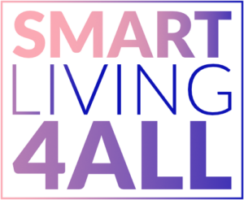

The Smart Living 4 All is aimed at improving the quality of life, the safety and the comfort in home environments, of the two most sensitive and care-needing population groups: children and elderly.
These two categories of users, typically, have low interaction capability with new technological tools, increasingly present in our everyday life.
Under the project, we want to exploit the most recent technologies (such as ICT, Big Data, wearable devices, Artificial Intelligence) to realize home environments able to adapt themselves to the specific needs of these users without a real physical interaction with them: these smart environments, thanks to the introduction of sensors, self-learning systems and Artificial Intelligence, must prove to be able to foresee and understand the needs of users who may be unable to fully express them, and behave accordingly.
The project involves the elaboration and the study of two different use cases, each with a specific focus: the Tender Age scenario, dedicated to the safeguard of the wellness and the comfort of the children, and the Active Ageing scenario, to meet the needs of the elderly.
Under the Tender Age scenario, a smart crib, named iCrib, is currently under development; it provides the parents with a new tool to guarantee and monitor the wellness of the baby thanks to the following technological components:
The system is also enabled to communicate and integrate itself with the most common home automation systems and IoT objects on the market (thermostats, illumination systems, plugs, locks etc).
The Active Ageing scenario foresees the analysis and development of a platform that offers the same features of iCrib. The architecture will see the integration of a smart piece of furniture (such as a bedside table), with a more specific focus on the needs of the elderly.
Some of the technologies named above will integrated: